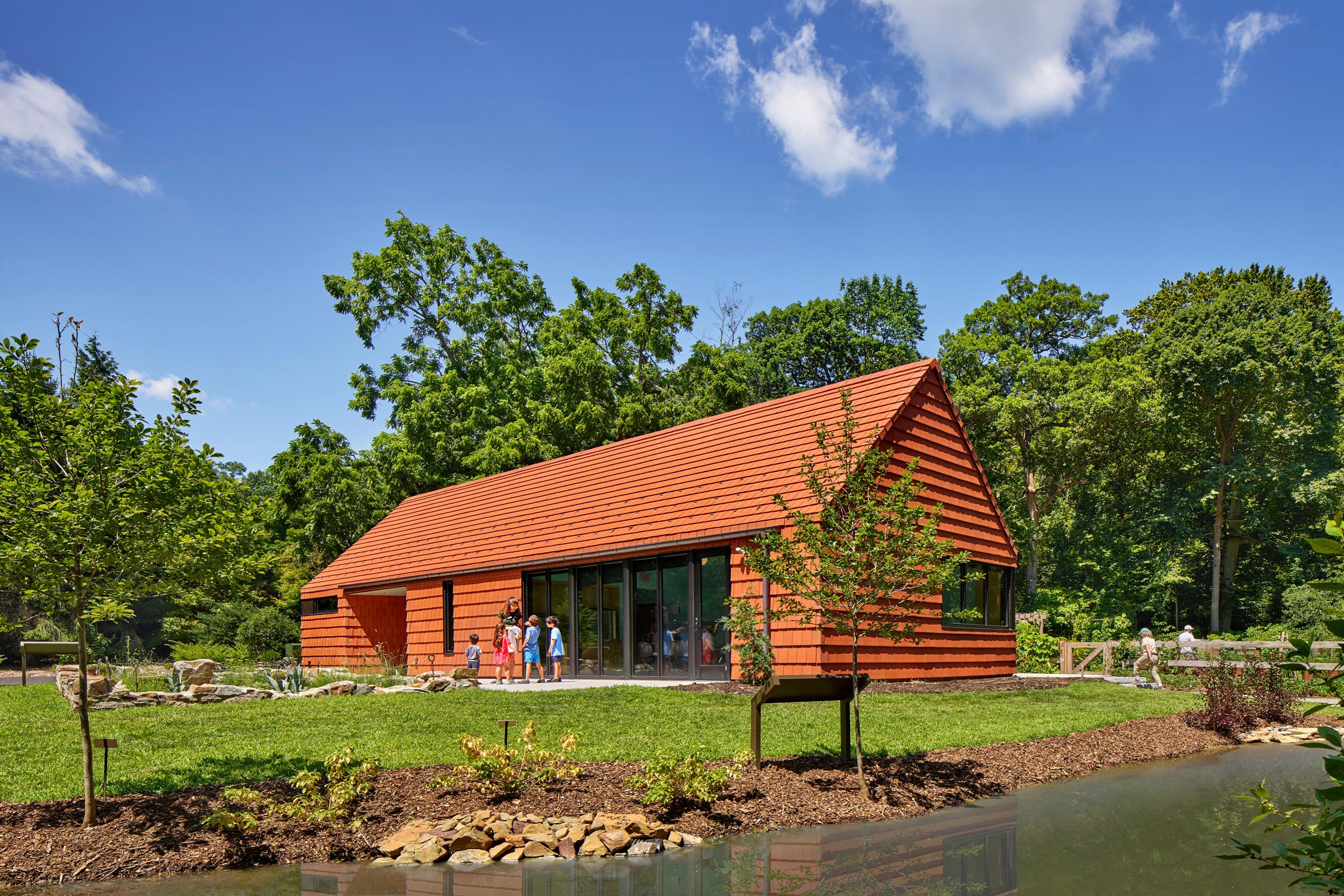Story at a glance:
- Terra-cotta is experiencing a renaissance as a sustainable material in architecture.
- The material’s ability to be customized in shape, size, and color makes it ideal for creating expressive facades.
- Now researchers are using terra-cotta in innovative new ways, from floor tiles to window mullions.
Terra-cotta—an Italian phrase that translates to “baked earth”—has been used for thousands of years to create everything from earthenware and sculptures to roofing tiles and masonry walls. Throughout history this non-vitreous, clay-based ceramic has remained a staple in the architectural world, reaching its zenith during the 19th century.
As concrete became the construction industry’s material of choice in the early 1930s, however, the use of terra-cotta in architectural applications experienced a significant decline. But with modern attitudes placing a greater focus on green building practices, terra-cotta has undergone a recent surge in popularity as architects experiment with environmentally sustainable and creative new applications for it.
In this article we explore eight ways to use terra-cotta in architecture.
1. Weather-Resistant Rainscreens

Shildan Group worked with Office 52 Architecture to provide a high quality terra-cotta rainscreen for the University of Oregon’s Tykeson Hall. Photo by Sinziana Velicescu
Since the turn of the 20th century terra-cotta has been used as a natural rainscreen in high-rises, but the system fell out of fashion with architects until the late 1990s, when rainscreen and sunscreen suppliers like Shildan Group introduced new systems to the market.
An open joint terra-cotta rainscreen both reduces the material use (and thus embodied carbon) of a project and allows for healthy walls with plenty of ventilation. Because the tiles aren’t held together with sealant or mortar, the system can be easily installed and repaired when damage occurs to the building’s exterior.
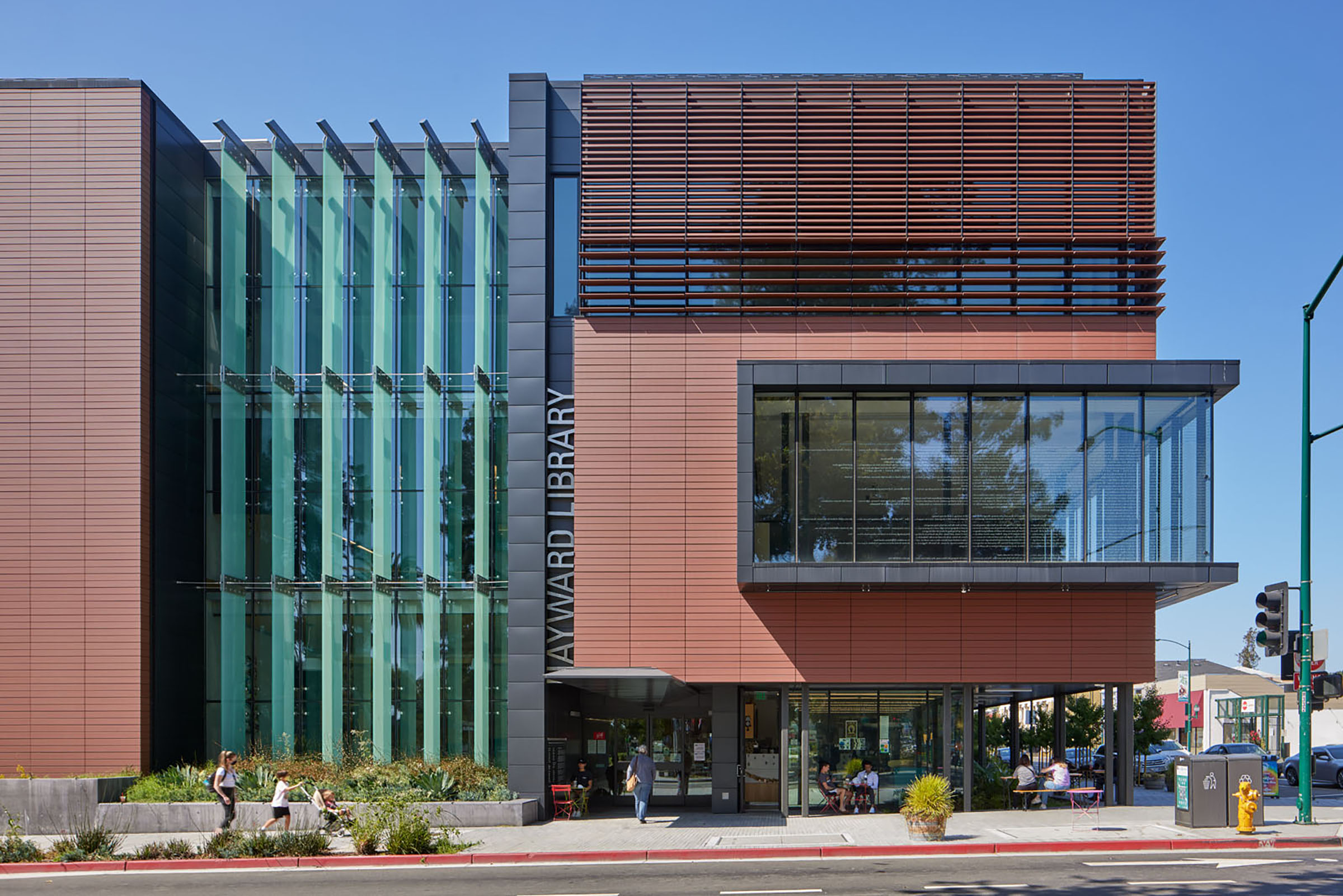
The Hayward Public Library’s facade features an open joint red terra-cotta rain screen, matching the color of the city’s historically brick buildings. Photo courtesy of Noll & Tam Architects
“I told them to leave the joint there. You don’t need to caulk or seal it. Leave it open and use terra-cotta to make the facade beautiful and healthy,” Shildan Group President Moshe Steinmetz previously told gb&d. “People looked at me like I was crazy and thought it would never work.”
When Noll & Tam Architects were hired by the City of Hayward, California to build their new public library, the firm selected a red, open joint terra-cotta rainscreen for the building’s facade. “There are 100 slightly varied colors, which gives it this nice texture and reflects the earth,” Scott Salge, principal at Noll & Tam, told gb&d in a previous article. “The soil it comes from really shows through in that material.”
2. Energy-Efficient Solar Screens
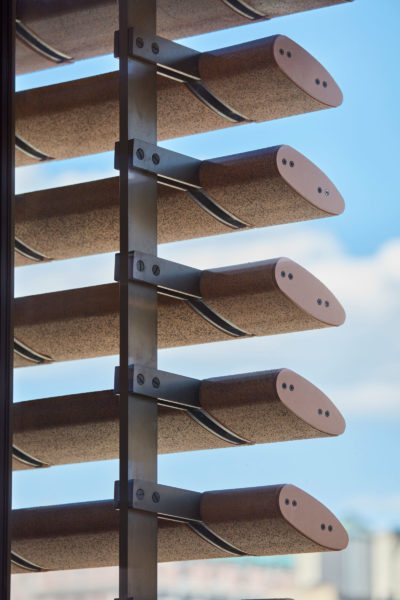
Terra-cotta louvers adorn the exterior of BKSK’s Charlotte of the Upper West Side, helping to mitigate solar heat gain and reduce peak energy loads. Photo by Christopher Payne/ESTO
In addition to rainscreens terra-cotta can also be used in solar screening systems to help mitigate solar heat gain and reduce operational energy loads. Historically this has been achieved through the use of terra-cotta breeze blocks, or decorative patterned blocks stacked similarly to conventional masonry walls. Terra-cotta screens of this sort provide privacy and shade while also helping to facilitate natural ventilation, making them ideal in hot, arid climates.
Modern terra-cotta solar screens also come in the form of slats or louvers. The BKSK-designed Charlotte of the Upper West Side, a sustainable condominium complex in New York City, for example, makes use of a louver-based terra-cotta solar shading system—one of many features that helped the project earn certification through the Passive House Institute (PHI).
“PHI design aims to vastly reduce heating and cooling demand in buildings, resulting in greatly reduced energy use while providing quiet interiors with excellent thermal comfort, regardless of season or exposure,” Todd Poisson, partner at BKSK Architects, wrote in a previous gb&d article. “To accomplish those goals, PHI design relies on a nearly airtight building envelope, with robust insulation and triple-glazed windows, and in 470 Columbus’s case, street-facing windows with four panes of glass, shaded by a custom terra-cotta screen.”
The building’s terra-cotta fins were designed by BKSK to achieve an optimum level of solar admittance and were finely crafted over a period of two years by Sannini, a leading Italian manufacturer of terra-cotta products. Magnesium pigment was added to give the clay slats their distinct color and help the project better match the neighborhood’s existing palette.
3. Structural Wall Assemblies
While not as common in contemporary architecture, terra-cotta has enjoyed a long history of use in structural wall applications, both in the form of solid blocks as well as webbed hollow-core blocks with multiple cells. The latter of these blocks is typically referred to as structural clay tile, of which was extremely common in buildings built during the early 20th century..
Historically, structural clay tile was frequently used as infill between steel structural components and around beams and columns as a means of fire-proofing. “One of the other great benefits of terra-cotta tile is its inability to burn,” Rob Wehr, vice president of business at Ludowici, wrote in a previous article for gb&dPRO.
Terra-cotta blocks can also be used on their own in vertical applications for load-bearing wall assemblies, in which case the hollow cells may be filled with some sort of reinforcing for added strength and security.
4. Sustainable Material for Roofing
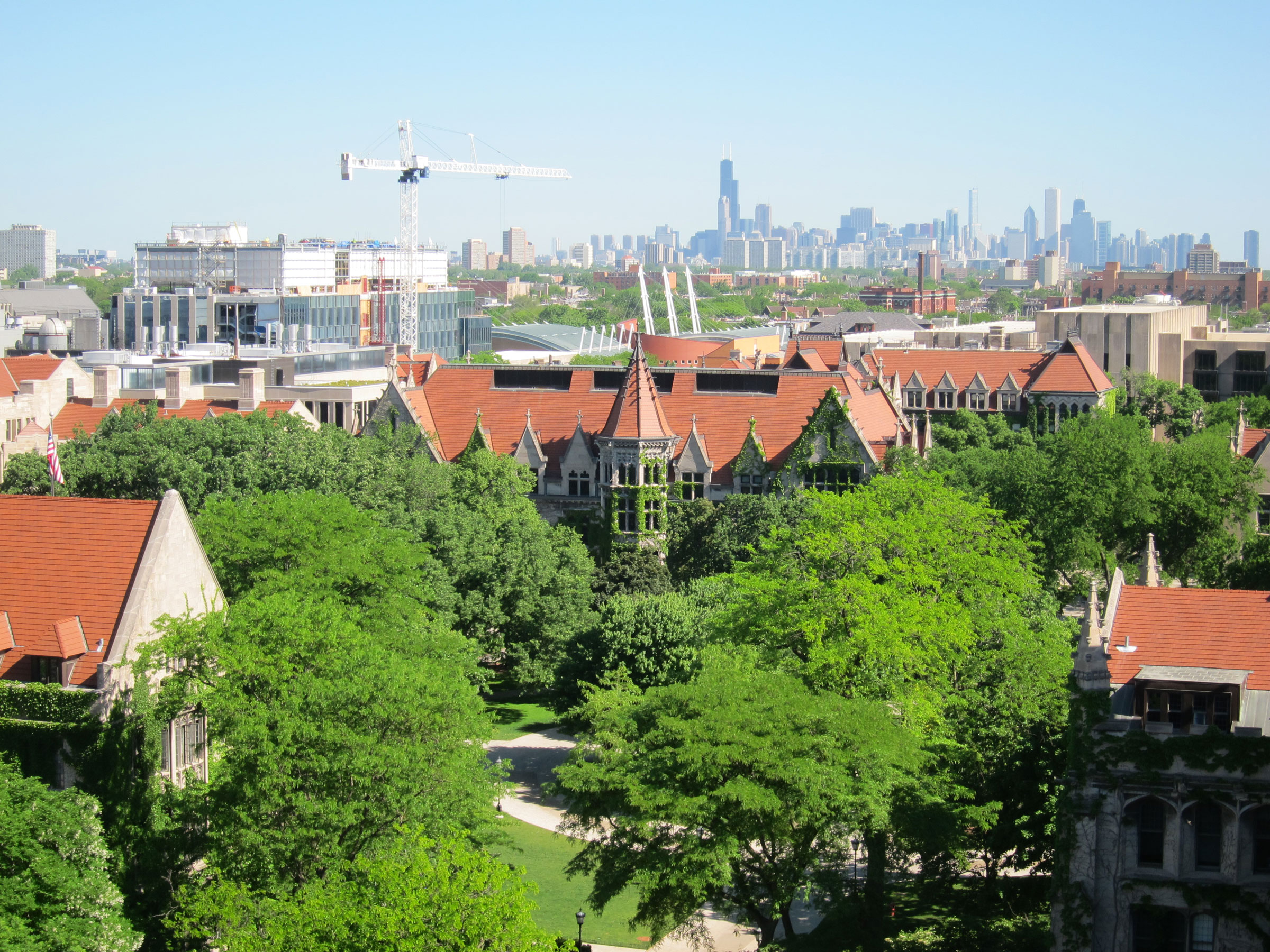
All 24 University of Chicago buildings were constructed similarly in the same year with the same roofing issues, making it easier to replace the masonry from the roofline up on every English Gothic building on campus. They now have new Ludowici clay tiles. Photo courtesy of Ludowici
While shingles are an oil-based product, terra-cotta is a natural mixture of clay, shale, and water. This makes terra-cotta one of the best sustainable roofing materials. Although heavier than shingle, terra-cotta tiles’ durability gives them century-long lifespans. Terra-cotta’s low moisture absorption rate is another characteristic that makes it an ideal material for roofing. These properties have made them a synonymous material in cities across Europe and Asia, as well as an increasingly popular material in North America.
Ludowici has been crafting architectural terra-cotta products since 1888 and recently updated the University of Chicago’s iconic English Gothic roofs. “When it comes to weather performance, not all tile is the same,” Wehr wrote in a another article for gb&dPRO. “The clay composition of our tile creates an ultimate breaking strength able to resist high wind stresses experienced during extreme weather events. When properly installed, Ludowici terra-cotta tiles can sustain high winds, fires, moisture, salt intrusion, and more.”

When applied to terra-cotta roof tiles, light-colored glazes can help increase a building’s SRI and reduce peak cooling loads during the hot summer months. Photo courtesy of Ludowici
Switching to circular, cradle to cradle materials that don’t produce waste is a change that makes it easier for projects to achieve a higher LEED certification. From the start of its lifespan terra-cotta produces no waste in its manufacturing process. It lasts a long time with minimal maintenance, and, because it’s a natural material, at the end of its lifespan it can be fully recycled. This gives terra-cotta a much lower embodied energy than other materials like steel, glass, and concrete.
And while glaze—or the liquid that gives terra-cotta tiles their color and glassy appearance—doesn’t add to a tile’s overall durability or weather resilience, it can help increase a building’s solar reflective index (SRI).
“A high SRI value means that a building is reflecting more light, so it’s not absorbing or trapping much heat. It’s releasing most of the heat that’s reflecting on it,” David Jensen, sample coordinator, glaze production scheduler, and color consultant at Ludowici, previously told gb&d. This in turn helps reduce a building’s energy usage and combat the urban heat island effect.
5. Durable Floor Tiles
The high durability of terra-cotta tiles means they can also be brought down to ground level to be used as flooring in both exterior and interior applications. This is especially true of Ludowici’s clay tiles, which boast an extremely high compressive strength that is unrivaled in the industry.
“Through superior raw materials, profile engineering, and the manufacturing process, Ludowici tiles are made to withstand more stress than any other clay tile product on the market,” writes Wehr. “The production process allows tiles to form into a dense, vitrified material with the highest strengths available—essential for peak performance.”
Despite specializing in clay roof tiles, Ludowici does offer a small selection of terra-cotta tiles designed for use in flooring systems. The company’s high-traffic institutional grade terra-cotta Promenade tiles—in use at both the White House and Rockefeller Center—for example, are available in two sizes (6”x 9” and 9”x9”), smooth and non-skid surfaces, and a range of custom colors, mists, and blends.
In addition to Promenade Ludowici carries two other terra-cotta floor tiles—the ogee-like Prominence and Valencia, a Moroccan inspired quatrefoil design. All three styles have a smooth base texture but are also available in custom textures.
6. High-Performance Cladding
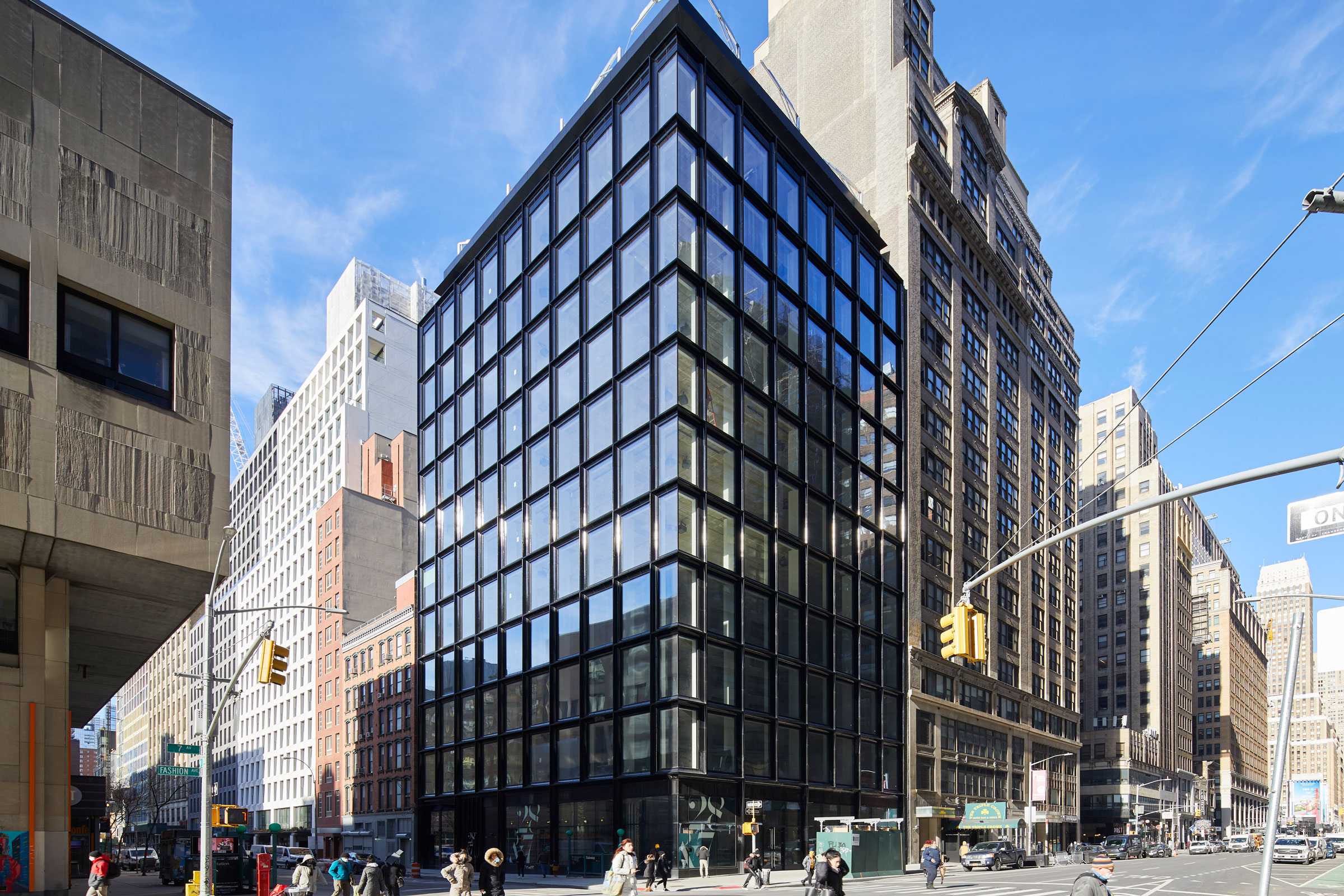
The facade at 28&7 was manufactured in a zero-waste, low-energy process, designed by Shildan Group with a custom glossy black glaze that visually highlights the structural grid. Photo by Dave Burk, courtesy of SOM
Although conventionally associated with roofing, terra-cotta also has a long history of use in building facades as cladding. Compared to its all-glass glazed counterparts, terra-cotta’s significantly higher thermal mass gives it better thermal performance by buffering against extremities in outdoor temperature. Architects also use terra-cotta as an alternative to glass to reduce the window-to-wall ratio of a building, allowing for greater energy efficiency and a more expressive facade.
SOM’s elegant 28&7 office building in the Chelsea neighborhood of Manhattan, for example, uses glass and custom reflective, black-glazed terra-cotta from Shildan to create a facade that finely tapers between floors and shimmers in the daylight. “We were very enamored with terra-cotta as a material,” SOM Design Partner Chris Cooper said in a previous gb&d interview. “It is having a real renaissance in its modern form of extruded terra-cotta versus the historic pressed terra-cotta we know from all around the city. We like that it’s a natural material, but it’s also a very versatile material.”
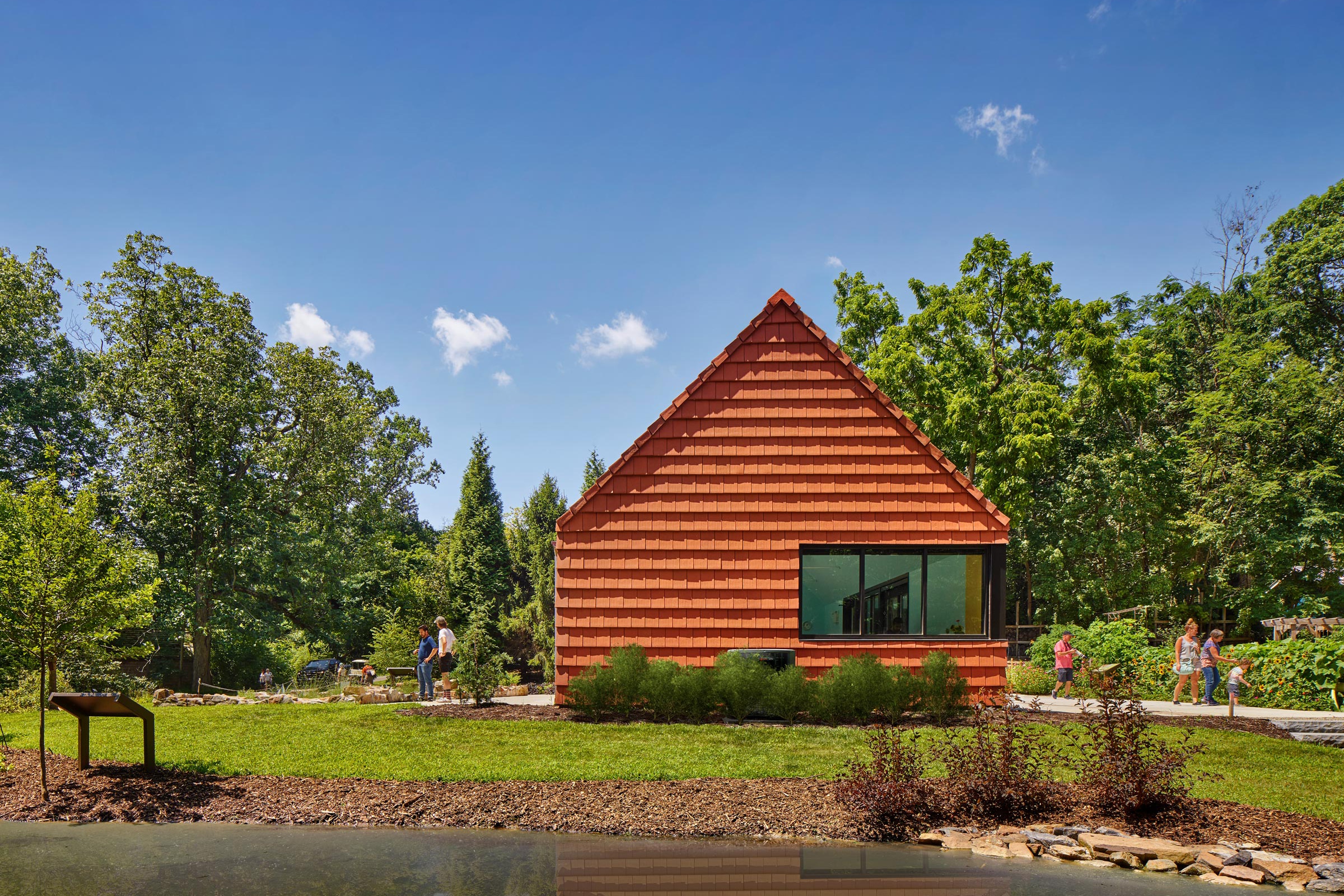
Ludowici wanted to create a structure that would not only withstand time but also evolve and become a part of the natural environment, leading to the decision to clad the entirety of Tyler Arboretum’s living classroom building in terra-cotta tile. Photo by Halkin Mason Photography
Taking things a step further, Tyler Arboretum’s living classroom building in Delaware County, Pennsylvania is clad entirely in Ludowici’s terra-cotta tiles, giving the site a natural aesthetic reminiscent of a garden pot. “The arboretum was looking for a more natural material that could be incorporated into a natural setting, would last, and would really speak to the purpose,” Tab Colbert, CEO of Ludowici, previously told gb&d. Over time, the tiles will become host to a variety of pollens and mosses, enhancing the building’s organic qualities.
7. Structural Applications
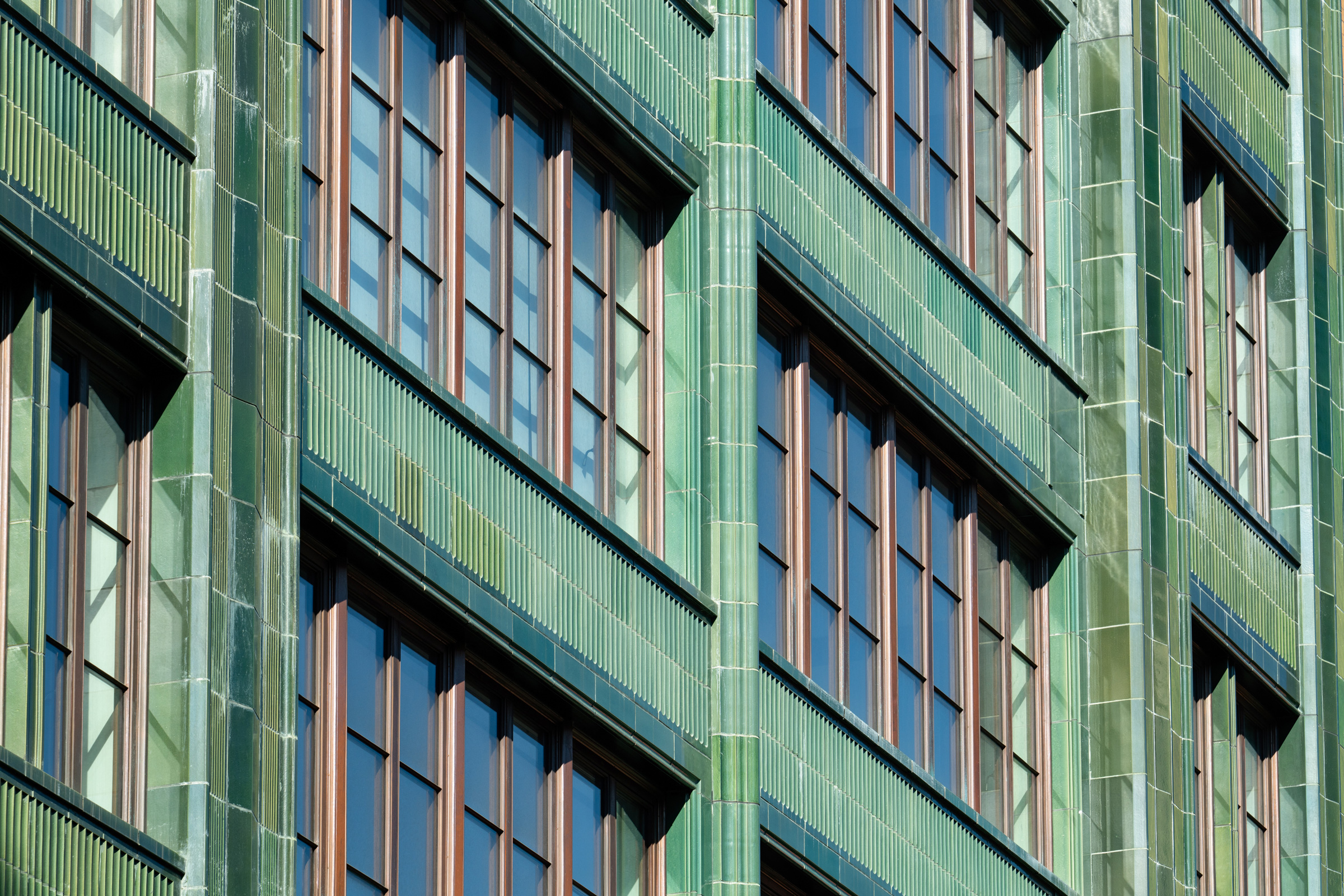
Boston Valley Terra Cotta produced architectural terra-cotta for the facade of The Fitzroy. Photo by Jimmi Billingsley
Beyond masonry walls architectural terra-cotta (ATC) can also be used within other structural systems and building components. The Architectural Ceramic Assemblies Workshop (ACAW) explores new applications for the material in buildings.
At ACAW 2021 a team composed of members from HOK, TriPyramid Structures, and the Gartner Division of Permasteelisa North America experimented with using terra-cotta as window mullions—post-tensioned with interior stainless steel tendons—in curtain wall systems. Clay in general has a high compressive strength, so with the addition of another material such as the stainless steel tendons to provide tensile strength it can serve as an efficient structural system.
The role that ATC can play in structural systems is considerable and is a driver in much if not all of the projects developed at ACAW. Conventional structural materials like steel and concrete are extremely carbon intensive, especially when it comes to procurement and manufacturing. Terra-cotta, on the other hand, is comparatively low-carbon, meaning its use in structural systems can help reduce a building’s overall embodied carbon.
“With terra-cotta everything is made in one place,” William M. Carty, a former ceramics engineering professor at Alfred University, explained in a 2020 presentation. “It’s the least energy intensive compared to metals and plastics.”
8. Architectural Ornamentation

Terra-cotta’s malleability and versatility has solidified its position as a top-tier material for use in the construction of architectural ornamentation. Photo courtesy of Ludowici
Terra-cotta’s ability to be customized in shape, size, and color makes it an ideal material for architectural expression in a building’s facade. This isn’t a new idea in architecture, with many historic and classically-designed buildings built throughout the 19th century sporting some form of terra-cotta decoration. The Reliance Building in downtown Chicago, for instance, is one of the world’s first skyscrapers and is clad in bright white, ornately-patterned terra-cotta tiles, giving the building an appearance of effortless lightness.
But with the emergence of the International Style—which favored materials like steel, glass, and concrete, as well as buildings with minimal ornamentation—in the 20th century, terra-cotta lost traction as an ornamental material. Today the material is experiencing a resurgence of popularity with architects for its low environmental impact and customization potential.
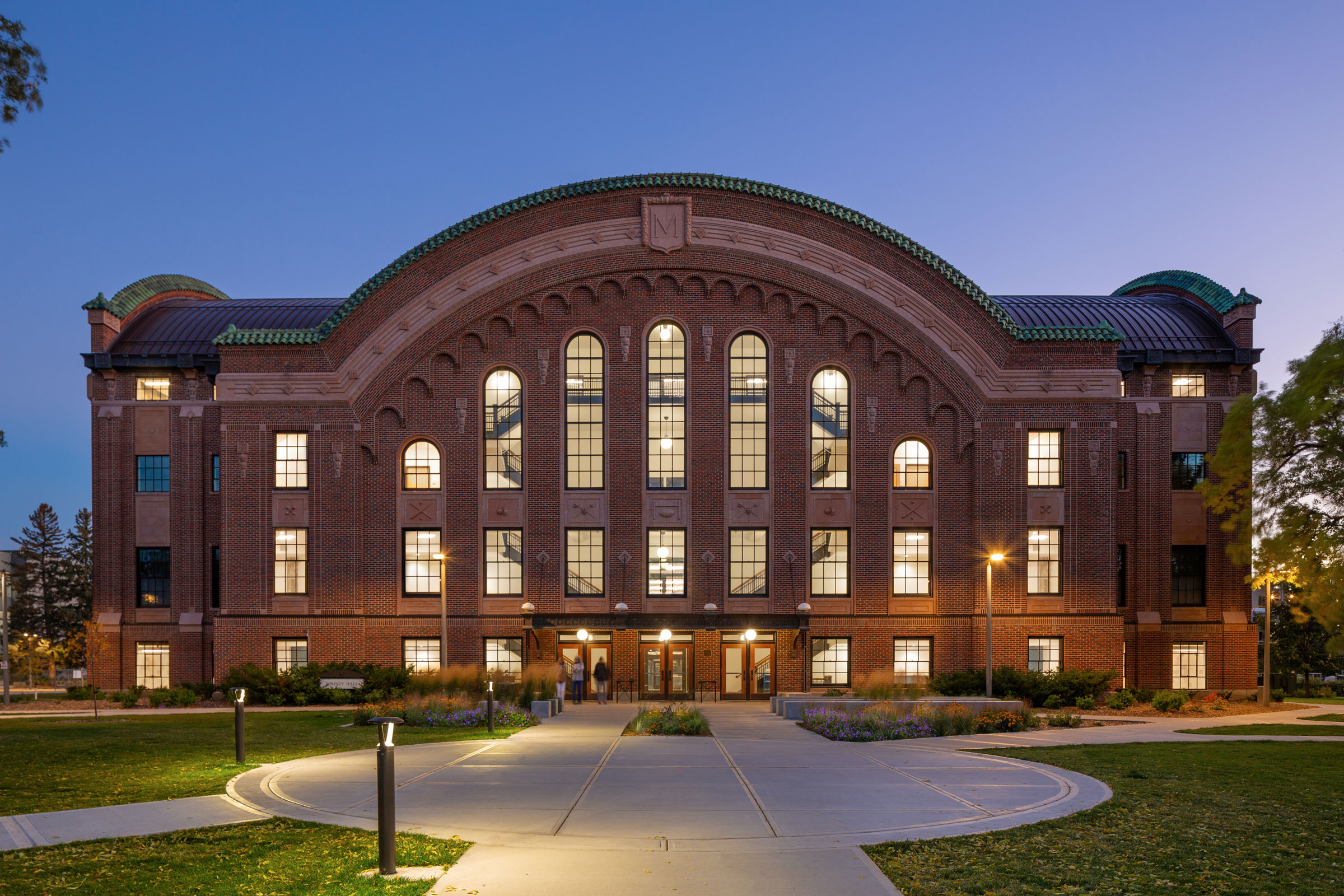
Romney Hall embodies the Italian Renaissance Revival style with a beautifully detailed tapestry-brick facade featuring terra-cotta spandrels decorated with athletic motifs, large wood and steel windows, copper detailing, and a barrel-vaulted metal roof. This iconic building contributes significant historic value to the Montana State University Historic District and is listed on the National Register of Historic Places. Photo by Karl Neumann
Cushing Terrell’s recently-completed renovation of Montana State University’s Romney Hall—originally built in 1922 in the Italian Renaissance Revival style—for example, makes use of terra-cotta spandrels decorated with an array of athletic motifs. At Desmone Architects’ Two Doughboy Square Pittsburgh office, a terra-cotta plaque and cornice medallions work alongside buff-colored brick to give the former bank a uniquely Beaux-Arts-style aesthetic.
Spencer Allan contributed to this article.

